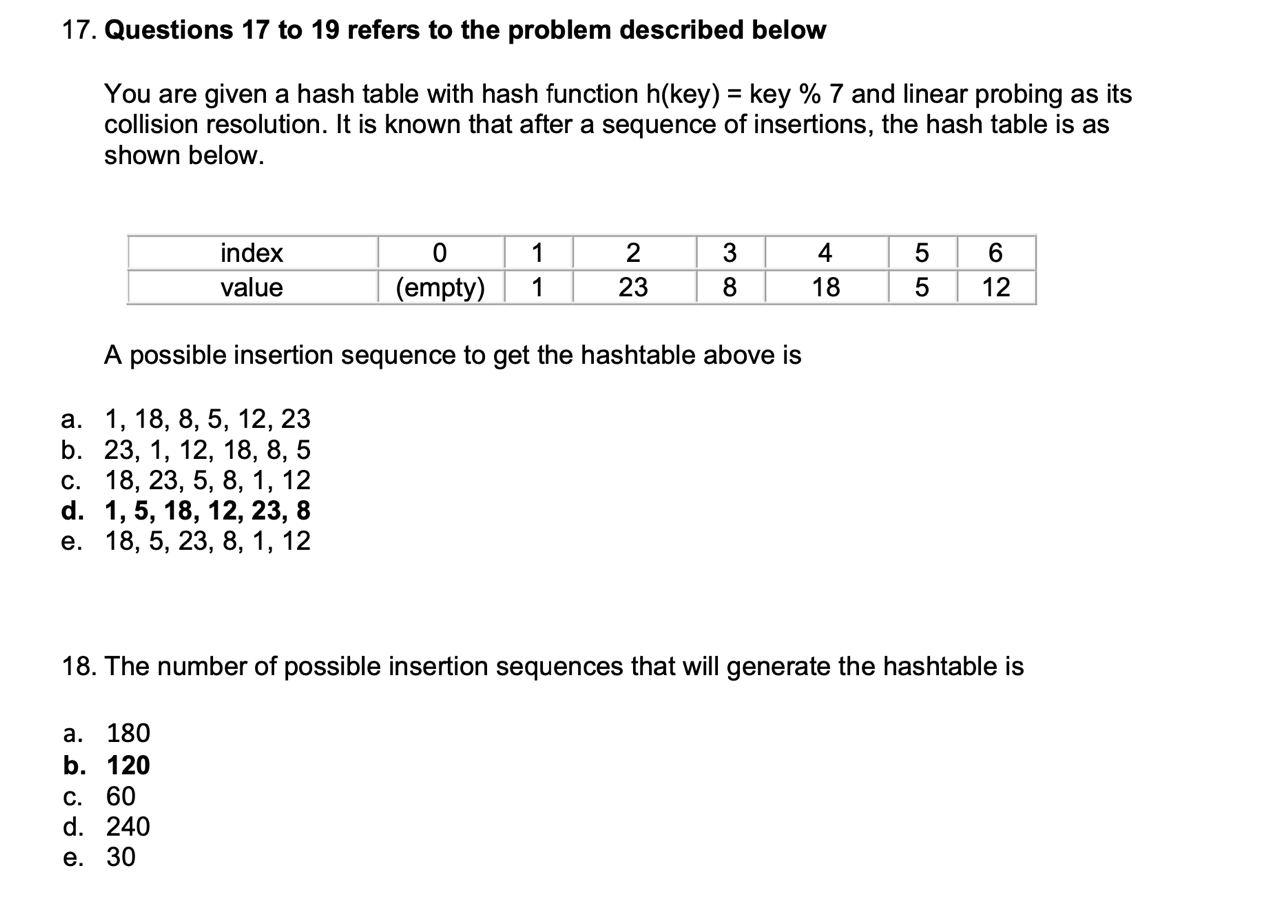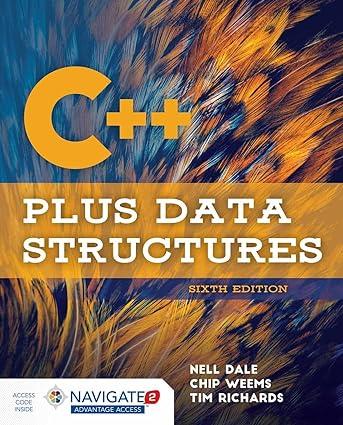Question
Can you explain question 17. Questions 17 to 19 refers to the problem described below You are given a hash table with hash function h(key)
17. Questions 17 to 19 refers to the problem described below You are given a hash table with hash function h(key) = key % 7 and linear probing as its collision resolution. It is known that after a sequence of insertions, the hash table is as shown below. index value 0 1 2 3 4 (empty) 1 23 8 18 A possible insertion sequence to get the hashtable above is a. 1, 18, 8, 5, 12, 23 b. 23, 1, 12, 18, 8, 5 c. 18, 23, 5, 8, 1, 12 d. 1, 5, 18, 12, 23, 8 e. 18, 5, 23, 8, 1, 12 55 62 12 18. The number of possible insertion sequences that will generate the hashtable is a. 180 b. 120 C. 60 d. 240 e. 30
Step by Step Solution
There are 3 Steps involved in it
Step: 1

Get Instant Access to Expert-Tailored Solutions
See step-by-step solutions with expert insights and AI powered tools for academic success
Step: 2

Step: 3

Ace Your Homework with AI
Get the answers you need in no time with our AI-driven, step-by-step assistance
Get StartedRecommended Textbook for
C++ Plus Data Structures
Authors: Nell Dale, Chip Weems, Tim Richards
6th Edition
1284089185, 978-1284089189
Students also viewed these Programming questions
Question
Answered: 1 week ago
Question
Answered: 1 week ago
Question
Answered: 1 week ago
Question
Answered: 1 week ago
Question
Answered: 1 week ago
Question
Answered: 1 week ago
Question
Answered: 1 week ago
Question
Answered: 1 week ago
Question
Answered: 1 week ago
Question
Answered: 1 week ago
Question
Answered: 1 week ago
Question
Answered: 1 week ago
Question
Answered: 1 week ago
Question
Answered: 1 week ago
Question
Answered: 1 week ago
Question
Answered: 1 week ago
Question
Answered: 1 week ago
Question
Answered: 1 week ago
Question
Answered: 1 week ago
Question
Answered: 1 week ago
Question
Answered: 1 week ago
View Answer in SolutionInn App




